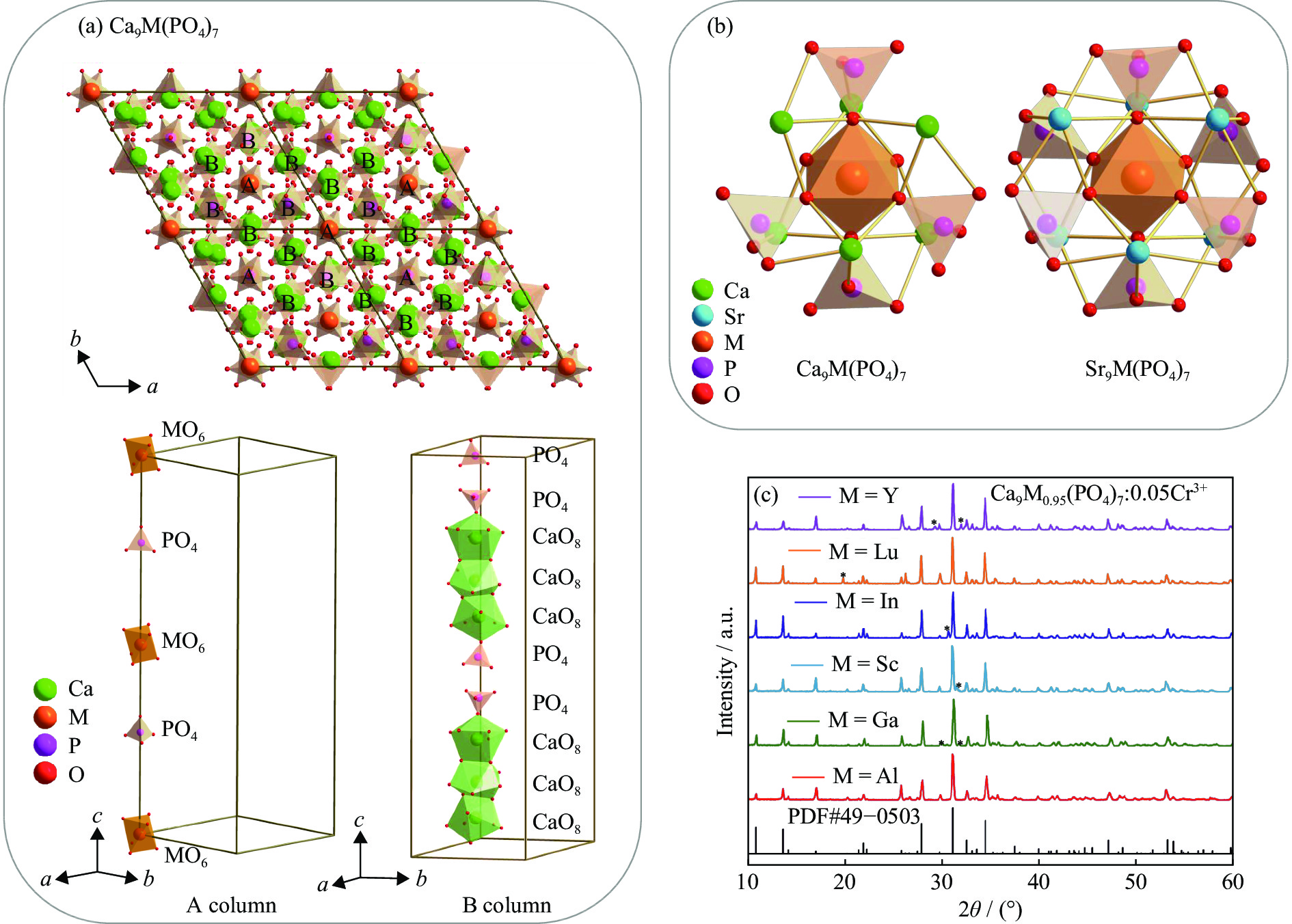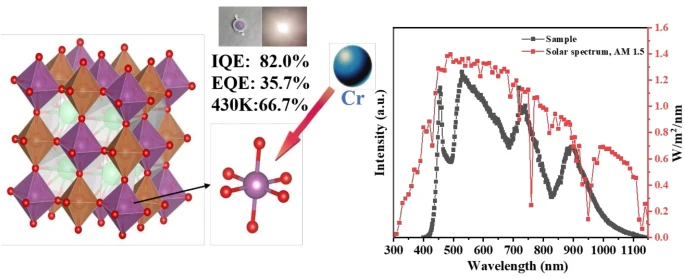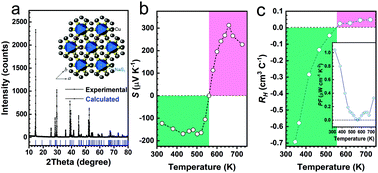Int. J. Miner. Metall. Mater., 29(2022), No. 6, pp. 1286-1294. http://ijmmm.ustb.edu.cn/article/doi/10.1007/s12613-021-2363-6

Cr3+-activated far-red and near-infrared phosphors have drawn considerable attention owing to their adjustable emission wavelengths and wide applications. Herein, we reported a series of Cr3+-doped phosphors with β-Ca3(PO4)2-type structure, of which Ca9Ga(PO4)7:Cr3+ possessed the highest far-red emission intensity. At an excitation of 440 nm, the Ca9Ga(PO4)7:Cr3+ phosphors exhibited a broad emission band ranging from 650 to 850 nm and peaking at 735 nm, and the broadband superimposed two sharp lines centering at 690 and 698 nm. The optimal sample Ca9Ga0.97(PO4)7:0.03Cr3+ had an internal quantum efficiency of 55.7%. The luminescence intensity of the Ca9Ga0.97(PO4)7:0.03Cr3+ phosphor obtained at 423 K could maintain 68.5% of that at room temperature, demonstrating its outstanding luminescence thermal stability. A phosphor-conversion light-emitting diode was fabricated, indicating that the Ca9Ga(PO4)7:Cr3+ phosphor has potential applications in indoor plant cultivation.








